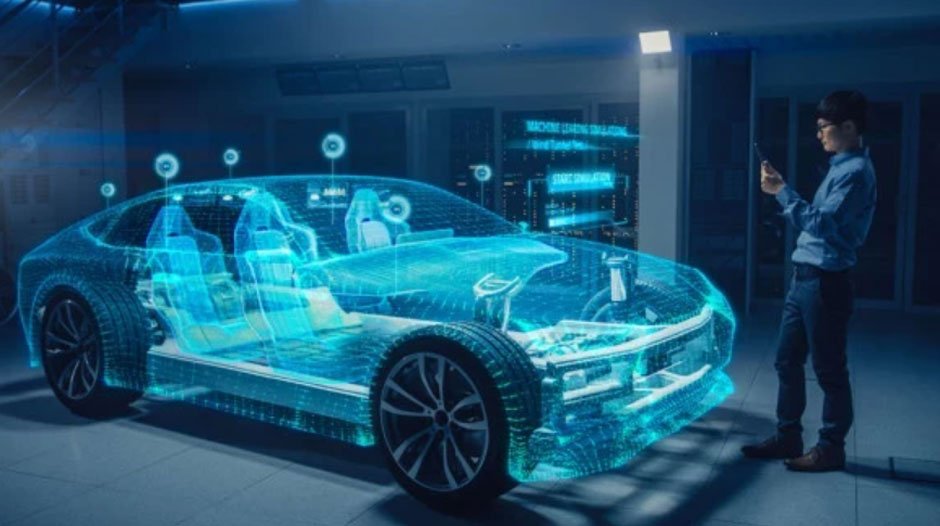Autonomous vehicles (AVs) are revolutionizing the way we think about transportation. In Louisville, these cutting-edge technologies are becoming increasingly prominent, promising safer and more efficient travel. The innovations driving the development of AVs are diverse and complex, encompassing advancements in artificial intelligence, sensor technology, and data analytics.
As autonomous vehicles become more common, understanding the technology behind them and the legal implications of their use is crucial. For those affected by accidents involving AVs, consulting a car accident legal team at Dolt, Thompson, Shepherd & Conway, PSC can provide essential guidance and support.
Advanced Sensor Technologies
One of the core innovations powering autonomous vehicles is advanced sensor technology. These sensors, including LiDAR, radar, and cameras, provide AVs with a comprehensive view of their surroundings. LiDAR (Light Detection and Ranging) uses laser pulses to create detailed 3D maps, enabling precise obstacle detection and navigation in complex environments.
Radar complements LiDAR by detecting objects’ speed and distance, even in poor weather conditions. It tracks the movement of vehicles and pedestrians, ensuring situational awareness regardless of environmental challenges.
Cameras provide high-resolution images to identify traffic signs, lane markings, and other visual cues, helping AVs follow road rules and adapt to dynamic traffic conditions. Together, these sensors create a robust system for real-time perception and navigation, ensuring safe and efficient operation of autonomous vehicles.
Artificial Intelligence and Machine Learning
Artificial intelligence (AI) and machine learning (ML) are at the heart of autonomous vehicle technology. AI algorithms process the vast amounts of data sensors collect, enabling the vehicle to make decisions and learn from its experiences. Machine learning allows the system to improve by analyzing driving patterns and outcomes.
These technologies enable AVs to recognize and respond to various driving scenarios, from simple tasks like stopping at a red light to complex maneuvers like merging onto a highway. Continuously improving AI and ML algorithms is critical to enhancing the safety and reliability of autonomous vehicles.
Real-Time Data Processing
Real-time data processing is vital for the safe operation of autonomous vehicles. These vehicles must quickly analyze data from sensors to make accurate decisions. High-performance computing systems and advanced algorithms manage this rapid data processing, allowing AVs to react appropriately to changing road conditions.
Edge computing enhances real-time processing by allowing data to be processed closer to its source, reducing latency and improving response times. This is crucial for immediate feedback applications like collision avoidance and emergency braking. By minimizing delays, edge computing ensures that autonomous vehicles operate safely and efficiently.
Connectivity and V2X Communication
Connectivity and Vehicle-to-Everything (V2X) communication are crucial for autonomous vehicles’ functioning. V2X technology enables vehicles to communicate with each other (V2V), infrastructure (V2I), and other road users, such as pedestrians and cyclists (V2P). This interconnected network enhances situational awareness and coordination among all road users. V2X communication allows vehicles to share real-time information about their position, speed, and direction, allowing for better anticipation of potential hazards and more informed decision-making.
By facilitating the exchange of critical data, V2X communication can significantly improve traffic flow, reduce accidents, and enable more efficient use of road infrastructure. For example, connected vehicles can receive real-time updates about traffic conditions and reroute to avoid congestion, contributing to smoother and safer travel. This can also lead to better fuel efficiency and reduced emissions as vehicles spend less time idling in traffic. Furthermore, V2X technology supports implementing advanced driver assistance systems (ADAS), enhancing overall vehicle safety and performance.
High-Definition Mapping
High-definition (HD) mapping provides autonomous vehicles with precise and detailed maps of their surroundings. These maps include information about road geometry, lane configurations, traffic signals, and other critical infrastructure elements. HD maps are continually updated to reflect environmental changes, ensuring accurate navigation.
HD mapping technology enhances the vehicle’s ability to understand and navigate complex road networks. It is particularly useful in urban areas with intricate street layouts and frequent changes in traffic patterns.
Cybersecurity Measures
As autonomous vehicles rely heavily on connectivity and data exchange, robust cybersecurity measures are essential to protect against potential threats. Here are the key points to consider:
- Strong Encryption: Encrypting data exchanged between the vehicle and external systems ensures sensitive information remains secure and prevents unauthorized access.
- Secure Communication Protocols: Secure communication protocols, such as TLS (Transport Layer Security), helps safeguard data integrity and confidentiality during transmission between AVs and other systems.
- Intrusion Detection Systems: Deploying intrusion detection systems within the vehicle’s network can identify and mitigate potential cyber threats by monitoring suspicious activities and responding to security breaches.
- Regular Software Updates: Regularly updating the vehicle’s software helps address vulnerabilities, apply security patches, and enhance overall system resilience.
- System Redundancy and Isolation: Designing AV systems with redundancy and isolation limits the impact of cyber attacks by isolating critical components and maintaining essential functions through backup systems.
Ethical and Legal Considerations
The deployment of autonomous vehicles raises important ethical and legal considerations. Determining liability in an accident involving an AV can be complex, involving multiple parties such as the vehicle manufacturer, software developers, and the vehicle owner.
Consulting a specialized legal team with expertise in autonomous vehicle laws can guide navigating the legal landscape surrounding these technologies. Legal experts can help address liability issues, ensure compliance with regulations, and advocate for fair compensation in the event of an accident.
Public Perception and Adoption
Public perception and acceptance are crucial for the widespread adoption of autonomous vehicles. Building trust in AV technology requires transparent communication about its benefits and limitations and demonstrating its safety and reliability through real-world testing and deployment.
Education and outreach initiatives can inform the public about how AVs work and their potential to improve road safety and reduce traffic congestion. Successful adoption also depends on developing supportive infrastructure, such as dedicated lanes and charging stations, to accommodate AV operations.
Future Directions and Innovations
The future of autonomous vehicles holds exciting possibilities for further innovation and development. Advances in quantum computing, 5G connectivity, and edge AI are expected to drive the next generation of AV technology. These advancements will enhance the capabilities of autonomous vehicles, making them even safer, more efficient, and more reliable.
Ongoing collaboration between industry, government, and academia will be essential to address technical challenges, regulatory hurdles, and societal impacts. The continued evolution of AV technology promises to transform transportation and mobility in Louisville and beyond.












